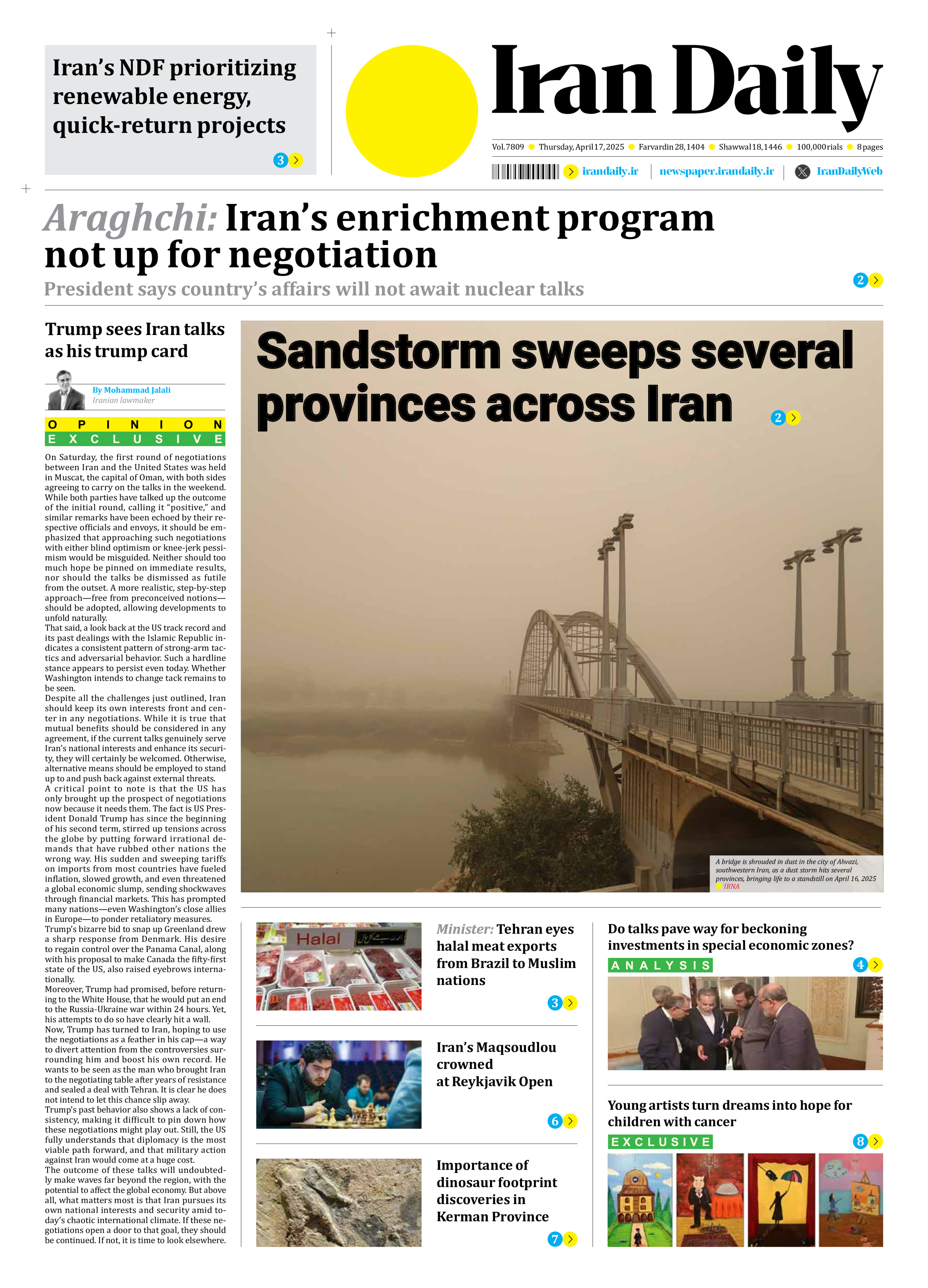
Trump sees Iran talks as his trump card
By Mohammad Jalali
Iranian lawmaker
On Saturday, the first round of negotiations between Iran and the United States was held in Muscat, the capital of Oman, with both sides agreeing to carry on the talks in the weekend. While both parties have talked up the outcome of the initial round, calling it “positive,” and similar remarks have been echoed by their respective officials and envoys, it should be emphasized that approaching such negotiations with either blind optimism or knee-jerk pessimism would be misguided. Neither should too much hope be pinned on immediate results, nor should the talks be dismissed as futile from the outset. A more realistic, step-by-step approach—free from preconceived notions—should be adopted, allowing developments to unfold naturally.
That said, a look back at the US track record and its past dealings with the Islamic Republic indicates a consistent pattern of strong-arm tactics and adversarial behavior. Such a hardline stance appears to persist even today. Whether Washington intends to change tack remains to be seen.
Despite all the challenges just outlined, Iran should keep its own interests front and center in any negotiations. While it is true that mutual benefits should be considered in any agreement, if the current talks genuinely serve Iran’s national interests and enhance its security, they will certainly be welcomed. Otherwise, alternative means should be employed to stand up to and push back against external threats.
A critical point to note is that the US has only brought up the prospect of negotiations now because it needs them. The fact is US President Donald Trump has since the beginning of his second term, stirred up tensions across the globe by putting forward irrational demands that have rubbed other nations the wrong way. His sudden and sweeping tariffs on imports from most countries have fueled inflation, slowed growth, and even threatened a global economic slump, sending shockwaves through financial markets. This has prompted many nations—even Washington’s close allies in Europe—to ponder retaliatory measures.
Trump’s bizarre bid to snap up Greenland drew a sharp response from Denmark. His desire to regain control over the Panama Canal, along with his proposal to make Canada the fifty-first state of the US, also raised eyebrows internationally.
Moreover, Trump had promised, before returning to the White House, that he would put an end to the Russia-Ukraine war within 24 hours. Yet, his attempts to do so have clearly hit a wall.
Now, Trump has turned to Iran, hoping to use the negotiations as a feather in his cap—a way to divert attention from the controversies surrounding him and boost his own record. He wants to be seen as the man who brought Iran to the negotiating table after years of resistance and sealed a deal with Tehran. It is clear he does not intend to let this chance slip away.
Trump’s past behavior also shows a lack of consistency, making it difficult to pin down how these negotiations might play out. Still, the US fully understands that diplomacy is the most viable path forward, and that military action against Iran would come at a huge cost.
The outcome of these talks will undoubtedly make waves far beyond the region, with the potential to affect the global economy. But above all, what matters most is that Iran pursues its own national interests and security amid today’s chaotic international climate. If these negotiations open a door to that goal, they should be continued. If not, it is time to look elsewhere.







